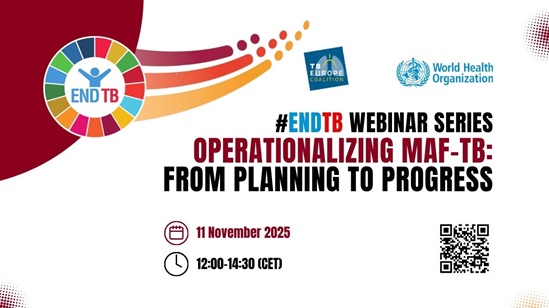Africa’s push for HIV independence advances with first procurement of locally made medicines – UN News

Report on Advancements in African Pharmaceutical Manufacturing and its Impact on Sustainable Development Goals
Executive Summary
Recent developments in Africa’s pharmaceutical sector mark a significant milestone in the continent’s journey towards health security and self-reliance, directly contributing to several Sustainable Development Goals (SDGs). The local production of first-line HIV antiretroviral therapy and diagnostic tests represents a crucial step in strengthening regional health systems, fostering economic growth, and reducing inequalities, aligning with the 2030 Agenda for Sustainable Development.
Milestone in HIV Treatment and Contribution to SDG 3 & SDG 10
Africa, which bears nearly 65 per cent of the global HIV burden, has historically relied on imported medicines. This dependency is now being challenged through local manufacturing initiatives that directly support SDG 3 (Good Health and Well-being) by improving access to essential medicines and SDG 10 (Reduced Inequalities) by mitigating health disparities between regions.
WHO Prequalification and First Procurement
- Kenya-based Universal Corporation Ltd. became the first African manufacturer to receive World Health Organization (WHO) prequalification for the production of tenofovir disoproxil fumarate, lamivudine and dolutegravir (TLD), a primary antiretroviral therapy.
- In a landmark move, the Global Fund is procuring this locally manufactured TLD for distribution in Mozambique.
- This achievement is projected to enhance health outcomes by ensuring uninterrupted medicine supplies for people living with HIV.
Bolstering Regional Capacity for Sustainable Industrialization (SDG 9 & SDG 8)
The push for local manufacturing is a strategic effort to build resilient infrastructure and promote sustainable industrialization, key targets of SDG 9 (Industry, Innovation, and Infrastructure). This also stimulates local economies, contributing to SDG 8 (Decent Work and Economic Growth).
Fostering Local Production and Innovation
- The WHO, in collaboration with partners like the Global Fund and Unitaid, is actively supporting the expansion of quality-assured African manufacturing.
- This initiative fosters a more self-reliant and equitable health system across the continent.
- The success of these initiatives is a testament to the power of multi-stakeholder collaborations, a core principle of SDG 17 (Partnerships for the Goals).
Addressing Structural Gaps and Future Challenges
While progress in local production is significant, long-term sustainability requires addressing structural gaps in both manufacturing and diagnostics. Ensuring the viability of these initiatives is critical to maintaining momentum towards achieving health-related SDGs.
The Critical Role of Diagnostics
Diagnostics are a foundational element of HIV prevention and treatment. In a related advancement supporting SDG 3, Nigerian diagnostics company Codix Bio received a sublicense to manufacture rapid diagnostic tests for HIV. The benefits include:
- Increased affordability of essential diagnostic tools.
- Reduced supply chain vulnerabilities and delays in access.
- Strengthened national testing programmes, which are the frontline of the HIV response.
Ensuring Long-Term Sustainability
To ensure these advancements translate into lasting impact, the WHO has outlined several necessary actions:
- Secure advanced market commitments to guarantee demand for locally produced health products.
- Implement fair procurement policies that prioritize quality-assured, locally manufactured goods.
- Provide ongoing technical support to African manufacturers to maintain and expand capacity.
- Encourage countries to adopt low-cost, WHO-prequalified rapid HIV tests to optimize resources while maintaining service delivery.
Sustainable Development Goals (SDGs) Addressed in the Article
-
SDG 3: Good Health and Well-being
The article’s primary focus is on combating the HIV/AIDS epidemic, a key component of SDG 3. It discusses the local production of antiretroviral medicines and diagnostic tests, which are essential for improving health outcomes and ensuring access to treatment. The text highlights that this development will “contribute to better health outcomes for people living with HIV who need uninterrupted medicine supplies.“
-
SDG 9: Industry, Innovation, and Infrastructure
The article directly addresses the goal of building resilient infrastructure and promoting sustainable industrialization. The establishment of local manufacturing capabilities for pharmaceuticals in Kenya (Universal Corporation Ltd) and diagnostics in Nigeria (Codix Bio) is a clear example of industrial development. WHO’s statement that “With every African manufacturer that meets WHO prequalification standards, we move closer to a more self-reliant, resilient and equitable health system” supports this connection.
-
SDG 10: Reduced Inequalities
The article touches upon reducing inequalities by addressing the disproportionate health burden and dependency on foreign aid. The region “bears nearly 65 per cent of the global HIV burden and has long depended on imports.” By developing local production, African nations can reduce this dependency, increase self-reliance, and ensure more equitable access to lifesaving treatments for their populations, thus reducing health inequalities between and within countries.
-
SDG 17: Partnerships for the Goals
The entire initiative described in the article is a result of multi-stakeholder partnerships. It explicitly mentions collaborations between the World Health Organization (WHO), the Global Fund, Unitaid, national governments (Kenya, Mozambique, Nigeria), and private sector companies (Universal Corporation Ltd, Codix Bio). This demonstrates a global partnership working to achieve common health and development goals.
Specific Targets Identified
-
SDG 3: Good Health and Well-being
- Target 3.3: End the epidemics of AIDS, tuberculosis, malaria and other communicable diseases. The article is entirely focused on the response to the HIV epidemic through improved access to treatment (TLD) and diagnostics.
- Target 3.8: Achieve universal health coverage, including access to quality essential health-care services and access to safe, effective, quality and affordable essential medicines. The local production of WHO-prequalified TLD and rapid tests aims to “increase affordability, and more broadly address supply chain vulnerabilities and delays in access to diagnostics,” which are crucial for universal health coverage.
- Target 3.b: Support the research and development of medicines and vaccines for diseases that primarily affect developing countries and provide access to affordable essential medicines. The article is a case study of this target in action, detailing the local manufacturing of essential antiretroviral medicines for a disease disproportionately affecting Africa.
-
SDG 9: Industry, Innovation, and Infrastructure
- Target 9.2: Promote inclusive and sustainable industrialization. The article highlights the growth of the pharmaceutical manufacturing sector in Africa, with a Kenyan company becoming the “first African manufacturer” to receive WHO prequalification for TLD, a significant step in industrialization.
- Target 9.b: Support domestic technology development, research and innovation in developing countries. The sublicense granted to Codix Bio, a Nigerian company, “to manufacture rapid diagnostic tests for HIV” is a direct example of supporting domestic technology development and innovation in the health sector.
-
SDG 17: Partnerships for the Goals
- Target 17.16: Enhance the global partnership for sustainable development. The article describes a complex partnership involving WHO, the Global Fund, Unitaid, and African manufacturers to “strengthen supply chain systems in Africa.“
- Target 17.17: Encourage and promote effective public, public-private and civil society partnerships. The collaboration between WHO (public), the Global Fund (partnership), and private companies like Universal Corporation Ltd is a clear example of the public-private partnerships this target aims to foster.
Indicators for Measuring Progress
The article implies several indicators that can be used to measure progress towards the identified targets:
- Number of African manufacturers receiving WHO prequalification: The article explicitly states that Universal Corporation Ltd became the “first African manufacturer” for TLD, making this a clear indicator of progress in local production capacity.
- Procurement of locally manufactured health products: The fact that the “Global Fund – a worldwide partnership financing HIV… is procuring this locally produced HIV treatment for Mozambique” serves as a direct indicator of market access and sustainability for local manufacturers.
- Number of technology transfer or sublicensing agreements: The mention that “Codix Bio, a Nigerian diagnostics company, recently received a sublicense to manufacture rapid diagnostic tests for HIV” is an indicator of domestic technology development.
- Increased affordability and reduced supply chain delays: The article states that local production will “increase affordability, and more broadly address supply chain vulnerabilities and delays.” Measuring changes in medicine costs and delivery times would be a key indicator of success.
Summary of SDGs, Targets, and Indicators
| SDGs | Targets | Indicators Identified in the Article |
|---|---|---|
| SDG 3: Good Health and Well-being |
3.3: End the AIDS epidemic. 3.8: Achieve universal health coverage and access to affordable essential medicines. 3.b: Support R&D and access to affordable medicines for developing countries. |
|
| SDG 9: Industry, Innovation, and Infrastructure |
9.2: Promote inclusive and sustainable industrialization. 9.b: Support domestic technology development and innovation. |
|
| SDG 10: Reduced Inequalities |
10.2: Promote social and economic inclusion. 10.6: Ensure enhanced representation for developing countries. |
|
| SDG 17: Partnerships for the Goals |
17.16: Enhance the global partnership for sustainable development. 17.17: Promote effective public-private partnerships. |
|
Source: news.un.org

What is Your Reaction?
 Like
0
Like
0
 Dislike
0
Dislike
0
 Love
0
Love
0
 Funny
0
Funny
0
 Angry
0
Angry
0
 Sad
0
Sad
0
 Wow
0
Wow
0



























;Resize=805#)



















































